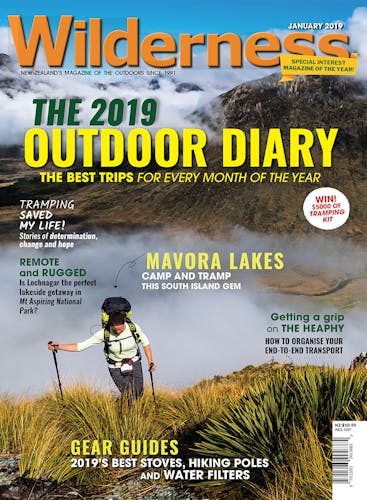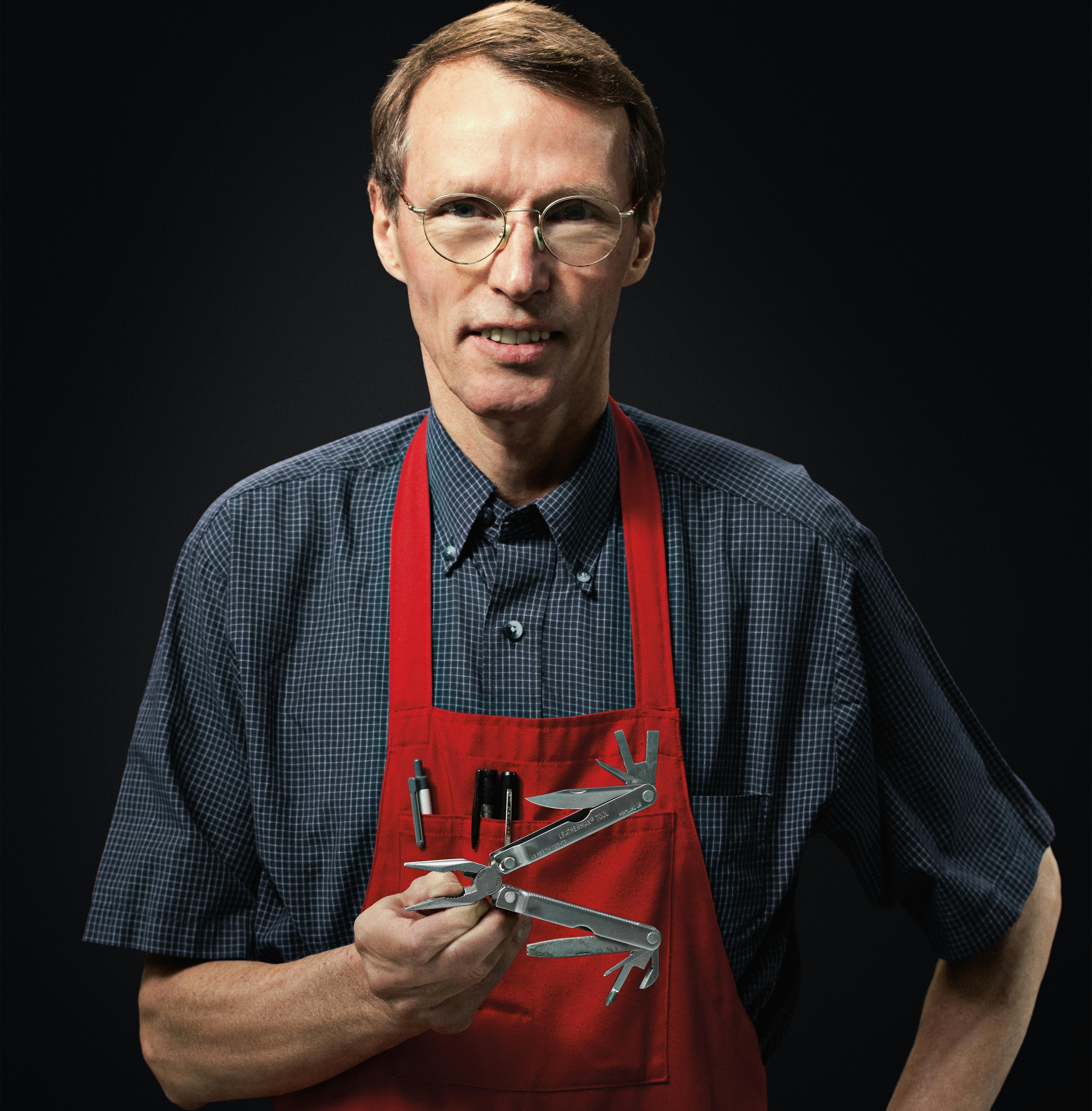It was 35 years ago that Tim Leatherman first sold his folding pair of pliers and launched the brand that came to define the term multi-tool. But it was no overnight success, as he tells Alistair Hall
Did you ever think you’d celebrate a milestone like 35 years of Leatherman?
After seven years in the garage, I was thinking if I could just make tools for six months of the year and sell them for the other six months, I would be happy. It got to the point where I was desperate for any kind of sale.
How did you maintain your determination and motivation for all those years?
I am a stubborn person, a persevering person. I like to say there’s a fine line between perseverance and failure to accept reality and if you’re going to err on one side or the other, err on refusing to accept reality. From the beginning, I set a goal to create this product that I felt I needed and then to commercialise
it somehow.
When you finally got your first order – for 500 tools no less – how did it feel?
That felt very, very good. I was climbing the walls and I was going across the ceiling. By then I had a business partner and I called Steve and he was so happy, but then we both settled down and we realised that was 500 tools but we wanted an order for 4000. We decided to accept the order and start a company to produce those tools.
Were you ready to manufacture that number of tools or was that another challenge?
We thought we were. The first step in the process was to invent the tool. The second step was to find a customer to sell the tool. And the third step was to invent a way to make the tool, which was really more challenging and more fun for me than inventing the tool itself.
The rest is history?
The twist is that during the eight years, I created a prototype I liked and wrote to 279 mail order catalogues saying if you want to see my prototype, let me know. We got zero replies. the 280th catalogue was in Seattle and instead of writing them we called them and said we have a new kind of pocket knife, can we show you. They liked it, but thought it would be too expensive and suggested I make some modifications.
So I went back to Portland and spent another six months in the garage and came out with a tool that looked very close to the PST II.
We took a photo of this tool, mailed it to 279 catalogues and got the order from Cabelas in late May 1983. While making this tool for Cabelas, the Seattle catalogue got in touch and ordered 250. Time passed quickly. A couple of days after Christmas, we got a call from the Seattle catalogue asking where are they. We said any day now. We need them badly, they’re all sold and here’s an order for 500 more. They called a week later and said the 500 have gone, here’s an order for 750, two weeks after that the 750 had been sold, here’s an order for 1000.
That’s when things got pretty hectic.
How many Leatherman tools do you sell these days?
We sell 8000 a day. I like to phrase it in terms of we make 8000 a day and we manage to sell almost all of them.
Leatherman offers a 25-year guarantee. What does that mean?
Technically it is a guarantee against defects, material and workmanship. We get a few tools back where there is a flaw inside the jaw and we didn’t know it’s there and we will happily honour the guarantee. Of the number of tools we sell, less than four per cent come back and most of those that come back were used beyond their capability and the customer knows it. We tell them no problem, send it in.
If a company treats you really well you’ll tell seven people and my business philosophy is to have those seven people be salespeople for Leatherman
Not all your tool are pliers. How did the Micra come about?
Early on we had a meeting to think through new products and the vice president of sales came to the meeting with a small block of wood and he said let’s make a tool this size. I thought OK, we’re going to take this tool and scale it down and that will be the new product. We gave it to a young engineer who hadn’t been working for long and to my horror he came back to us with a tool the size of the block of wood but when you opened it up there were not pliers here, there were scissors. I said ‘No, no, no, no, no there is much potential in the pliers market. We’ve got to keep our focus.’
But the rest of the management team said it was a good product so in one of the few good decisions I made, I said OK, let’s see what happens. By units, the Micra is the best seller in Leatherman’s history.
What trends are you seeing in multi-tools?
I think most of the trends are set by Leatherman. One of the things we’ve found is customers like the most functionality with the highest quality in the smallest space with the least weight. That’s my product design philosophy.
What’s next in the world of multitools – can we expect smart tools or power tools?
In the more distant future, a power tool is a possibility. One of the first things I’d like to have in the way of electronics in a tool would be an emergency locator beacon. It’s already technically feasible in a bigger item, but I’m waiting for it to be technically feasible in something as small as a leatherman tool. In the really distant future, I can envision that the method of separating an object into two parts would not be cutting or sawing, you would use a laser to do it. I can imagine that time for Leatherman to be relevant it will need to be a laser instead of a saw or knife.
Can you have too many tools in a multitool?
Yes, I think you can. If you go back to that design philosophy, there’s the trade-off between space and weight and if you get it too big and too heavy, you wouldn’t carry it with you.
What’s your favourite Leatherman tool?
There’s a deluxe version of the Leatherman Wave called the Charge. As owner of the company, I think I can give myself permission to carry the deluxe version. I sometimes also rotate in the Rebar. It’s my original tool but updated with modern features.
What advice do you have for people to look after their multi-tools?
That’s a good one, especially for New Zealanders. Our tools are stainless steel but many people think stainless means no stain, but actually it means ‘stains less’ and in a saltwater environment even a Leatherman will suffer corrosion. So I recommend washing it in fresh water, drying it off and applying a bit of oil to keep it rust-free.








